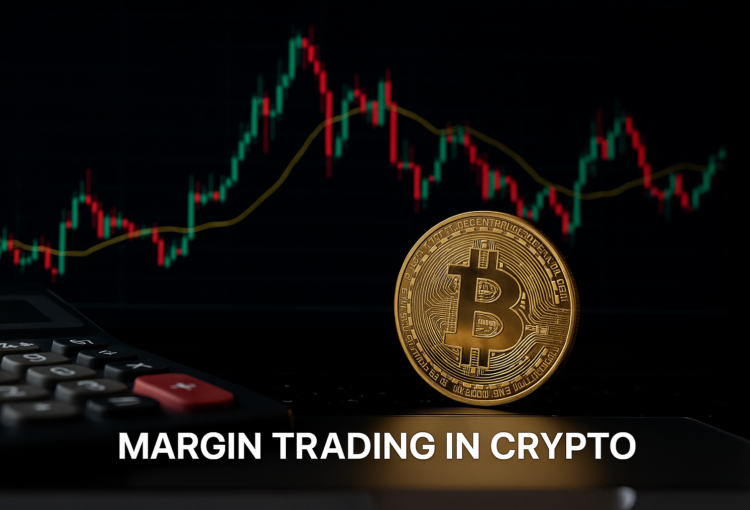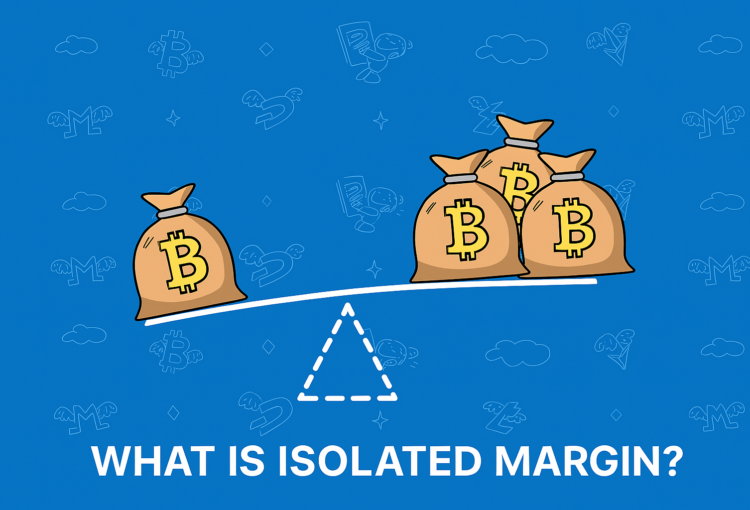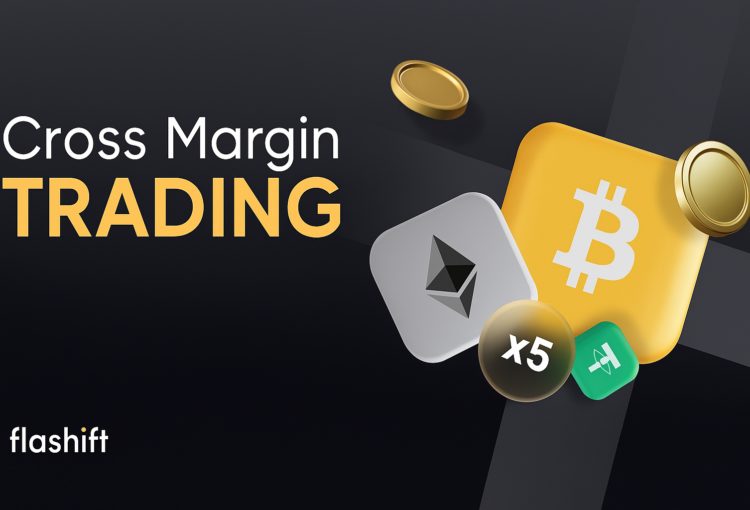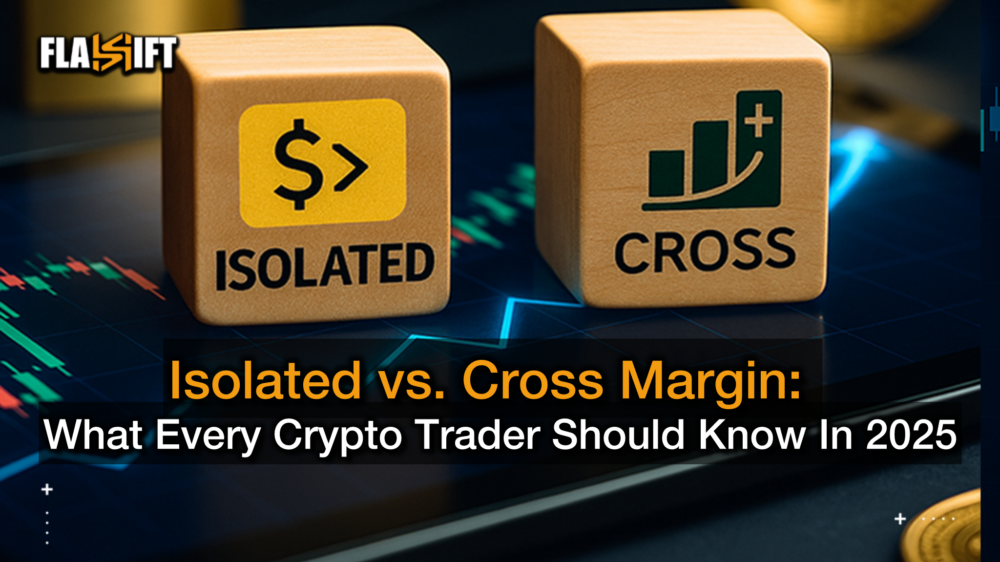Ever wondered why one trader survives a brutal market dip while another gets liquidated in minutes? The answer often lies in a small but powerful choice: isolated vs cross margin. Understanding how your margin is managed can be the difference between growing your portfolio or wiping it out.
In 2025, with platforms offering higher leverage, more complex derivatives, and AI-driven trade execution, margin strategies have become a critical skill, not just in a technical setting. This guide breaks down what isolated and cross margin mean, how they affect your trades, and when to use each, whether you’re a cautious beginner or a seasoned trader chasing the next bull run.
Margin Trading in Crypto

Margin trading isn’t just for Wall Street veterans anymore. In the crypto world, it has become a go-to method for traders looking to amplify their positions, and their profits. But with great leverage comes great responsibility.
What Is Margin Trading in Crypto?
Margin trading allows you to borrow funds to open larger positions than your account balance would normally allow. Instead of buying $1,000 worth of Bitcoin with your own funds, you can use 5x leverage and control $5,000, multiplying both your potential gains and losses. It’s essentially trading with borrowed capital, where your initial deposit (called margin) acts as collateral.
Leverage, Collateral & Liquidation Explained
- Leverage refers to the ratio of borrowed funds to your own capital. Common crypto leverage options range from 2x to 100x.
- Collateral is your initial investment, if your trade moves against you, it can be partially or fully liquidated to cover the borrowed amount.
- Liquidation happens when your position falls below the required margin level. The exchange will forcibly close your trade, often at a loss, to protect its own funds.
Understanding these mechanics is critical. Without a strong risk strategy, high leverage can turn even a good trade into a disaster.
Why Margin Strategies Matter More in 2025
Crypto markets in 2025 are faster, more volatile, and more complex than ever. New traders are entering the space daily, while seasoned traders use automated bots, AI-powered analytics, and advanced risk tools. With this level of competition and volatility, knowing how to manage margin risk, especially the difference between isolated and cross margin — has become a necessity.
Smart traders don’t just chase profit, they control risk. And it starts with choosing the right margin type.
What Is Isolated Margin?

When you’re margin trading in crypto, the way you manage risk is just as important as the trade itself. Isolated margin is one of the most beginner-friendly yet powerful tools in your risk management toolkit, if you know how to use it right.
Definition and Core Features
Isolated margin is a trading mode where each position has its own dedicated margin balance. If the trade goes south, only the funds allocated to that specific position are at risk, not your entire account balance. It’s like putting your chips on separate tables in a casino: if one loses, the rest are untouched.
On most platforms, you manually assign how much margin (collateral) you want to risk per trade. That makes it ideal for traders who want clear control over their exposure and prefer to limit the blast radius if things go wrong.
Pros & Cons of Using Isolated Margin
✅ Pros:
- Risk containment: Only the selected margin is at risk.
- Great for short-term trades: Perfect for tactical plays or highly volatile pairs.
- Cleaner liquidation process: No impact on other trades or your full balance.
❌ Cons:
- Manual margin allocation: Requires hands-on management for each trade.
- No auto support from other balances: If margin is depleted, the position is liquidated unless you manually add funds.
- Higher margin call risk: If not actively managed, isolated positions may get wiped faster during fast market moves.
When Should Traders Use Isolated Margin?
If you’re a beginner, trading volatile assets, or managing multiple trades at once, isolated margin is often the safer bet. It gives you better risk segmentation and avoids the domino effect of one bad trade sinking your entire account. Even pro traders often use it when experimenting with high-risk pairs or entering short-term, speculative positions.
Bottom line: isolated margin is about control and protection. And in a world where one red candle can wipe out 20%, that control can be the key to survival.
What Is Cross Margin?

Cross margin is the power tool of margin trading, used by experienced traders who know how to manage risk across their entire account. Instead of isolating your collateral per trade, it uses your full available balance to support all open positions. That can be a game-changer, or a quick route to liquidation, depending on how you play it.
How Cross Margin Works
With cross margin, all of your open positions are backed by a shared pool of margin. If one trade starts losing, your account automatically pulls margin from the rest of your available balance (and even from profits of other trades) to keep it afloat. This reduces the chance of early liquidation — but also ties your account together, for better or worse.
Think of it like all your trades living in the same apartment. If one sets the kitchen on fire, everyone could be affected.
Benefits and Risks of Cross Margin
Benefits:
- Greater margin efficiency: All available funds support your positions, reducing liquidation risk.
- Useful for long-term or large positions: Especially when trading with high confidence or strong hedging strategies.
- Hands-off margin allocation: No need to micromanage each trade’s collateral.
❌ Risks:
-
- Contagion risk: One bad trade can drain your entire account.
- Complex management: Requires careful monitoring, especially with multiple volatile assets.
- Not ideal for beginners: Misuse can lead to rapid and unexpected liquidation.
Use Cases for Advanced Traders
Cross margin shines in the hands of traders who hedge positions, use advanced technical strategies, or trade large positions across correlated markets. For example, if you’re long on ETH and short on a DeFi token, both supported by the same margin pool, gains from one may protect losses from the other. It’s also the preferred setup for algorithmic or bot-based trading systems where margin efficiency is critical.
Cross margin is not for passive traders. You need real-time awareness and disciplined stop-loss settings to avoid catastrophic loss.
Key Differences Between Isolated vs Cross Margin

Choosing between isolated and cross margin isn’t just a technical setting, it’s a strategy decision that directly affects your risk, flexibility, and trading psychology. Let’s break down the most important differences every trader should know.
Capital Allocation & Risk Management
With isolated margin, you assign a fixed amount of capital to a single trade. This keeps the rest of your portfolio safe, even if that one trade fails. It’s like compartmentalizing your risk — perfect for volatile assets or testing new strategies.
In contrast, cross margin uses your full available balance to back all open positions. It’s more capital-efficient, especially for advanced traders managing multiple correlated trades. But it also means one bad trade can impact your entire account if left unchecked.
Liquidation Triggers in Each Mode
In isolated margin, liquidation occurs only if that single trade’s margin is exhausted. You won’t lose more than you allocated — unless you manually add margin.
In cross margin, liquidation happens if your total account equity falls below the maintenance margin. This mode helps prevent early liquidation but can drain your entire account if markets turn sharply.
Understanding how and when liquidation kicks in is crucial to avoid unexpected losses.
Trading Strategies Based on Margin Type
-
-
- Use isolated margin for high-risk, short-term trades, new assets you’re testing, or if you want tighter risk control.
- Use cross margin when hedging trades, holding large positions, or employing bots that manage risk across multiple positions in real-time.
-
Platform Support: Where You Can Use Each Margin Type?
Not all trading platforms treat margin the same, and knowing where and how you can access isolated vs cross margin is essential for building a flexible trading strategy in 2025. From spot trading to leveraged futures, top exchanges now offer tailored options to suit different risk appetites.
Major Exchanges Offering Margin Trading
Most leading crypto exchanges now support both isolated and cross margin, allowing traders to toggle based on their preference or strategy. Platforms like Binance, Bybit, and OKX let users choose their margin mode per position, often right before opening a trade.
Margin Options for Spot vs Futures Markets
-
-
- In spot trading, margin is used to borrow funds for buying assets directly (usually with lower leverage).
- In futures trading, margin powers leveraged contracts that bet on the future price — and here, both isolated and cross margin are common.
-
Many traders use isolated margin in futures to cap risk, especially on volatile altcoin pairs. Cross margin is often used in more stable or hedged strategies, particularly when managing multiple open positions that interact with each other.
Whether you’re trading ETH-PERP or leveraging a long/short setup on DeFi tokens, the platform’s margin flexibility can make or break your strategy.
Risk Management & Best Practices
Whether you’re using isolated or cross margin, one truth remains: margin amplifies everything — including your mistakes. That’s why risk management isn’t just a suggestion; it’s your survival strategy. In 2025’s fast, AI-driven crypto markets, being technically skilled isn’t enough — you need emotional discipline, too.
Setting Stop-Losses and Leverage Limits
Set your stop-loss before you even enter the trade — not while watching the chart spiral. This isn’t fear; it’s preparation. The same goes for leverage. Just because an exchange lets you crank it to 50x doesn’t mean you should.
In reality, most seasoned traders rarely go beyond 5x — because they know the goal isn’t just to win big, but to stay in the game long enough to keep playing.
Avoiding Forced Liquidation in Volatile Markets
Crypto doesn’t sleep — and neither does volatility. That random 8% wick on a Tuesday afternoon? It could wipe out an over-leveraged position in seconds.
Use isolated margin for risky bets. Use cross margin with hedging strategies. Most importantly, don’t treat margin as extra money — treat it as fuel. Burn it too fast, and your account crashes.
Smart traders also use tools like margin calculators, real-time PnL alerts, and portfolio dashboards to stay ahead of potential liquidations.
Psychology of Margin Trading — Greed vs Discipline
Here’s the truth no one loves to admit: margin trading isn’t hard because of math — it’s hard because of ego.
The temptation to “double down” after a loss or “ride the green candle” without protection has wrecked more accounts than bad TA ever has.
Discipline means walking away with profit even when you think it’ll go higher. It means accepting a small loss instead of holding out for a miracle. And it means having a plan before the trade — not emotions after.
Margin doesn’t just test your wallet — it tests your character.
The Future of Margin Trading in Crypto
Margin trading is no longer just a feature for power users — it’s becoming a core part of how crypto traders manage risk and opportunity. But as the landscape evolves, so do the tools, the rules, and the expectations. So what’s next?
Will AI-Driven Risk Tools Replace Manual Controls?
In 2025, trading is getting smarter — and so are the platforms. We’re seeing a clear shift toward AI-powered assistants that can auto-adjust your leverage, suggest stop-losses, and even pause trades when your portfolio hits preset thresholds.
The big question: Will we soon trust AI to manage our margin like we trust it to manage our playlists? Maybe not yet fully — but the tools are getting more intuitive. You’ll still be in control, but with smarter guardrails to keep your risk in check.
Read More: AI in Cryptocurrency Trading: Opportunities and Risks
Regulatory Trends in Leverage Limits
Regulators are watching. Closely. In many regions, we’re already seeing caps on max leverage (often 5x or less) and stronger KYC rules for margin-enabled accounts.
While this might feel restrictive, it’s also pushing platforms to innovate with safer products. Instead of wild 100x gambles, the future may look more like responsible leverage — baked into smarter, more transparent systems. And that could make the space more sustainable for long-term traders.
Safer On-Chain Margin Protocols and DeFi Integrations
DeFi is catching up. On-chain margin protocols are being redesigned with safer liquidation engines, real-time oracle pricing, and modular collateral systems that reduce risk for lenders and borrowers alike.
Expect to see cross-margin DeFi vaults, dynamic leverage pools, and integrations with hybrid exchanges that combine the best of CeFi’s speed with DeFi’s transparency.
The tools are evolving. The risks remain. But for those willing to learn and adapt, margin trading is likely to become not just safer — but smarter.
FAQs
-
-
What’s the main difference between isolated and cross margin?
Isolated margin limits your risk to a single position, while cross margin shares your account balance across all open trades — increasing both opportunity and risk.
-
Is cross margin better for experienced traders?
Generally, yes. Cross margin offers more flexibility and capital efficiency, but also requires careful risk management. It’s better suited for those with a strategy and discipline.
-
Can I switch between margin types after opening a trade?
On some platforms, no. Many exchanges require you to choose isolated or cross margin before opening a position. Always double-check before executing a trade.
-
Which margin type is safer for beginners?
Isolated margin is safer for most newcomers, as it prevents a single bad trade from wiping out your entire balance.
-
What happens if I get liquidated in cross margin?
In cross margin, the exchange will use your entire margin balance to cover losses — so liquidation could affect your entire account, not just the losing trade.
-
Does margin trading work the same in spot and futures?
No. Spot margin lets you borrow to buy assets directly, while futures margin backs leveraged contracts. Risk and rules vary, so learn both before jumping in.
-
Is margin trading allowed in all countries?
Not always. Some jurisdictions limit or ban leverage trading entirely. Always check your local regulations and platform compliance before trading.
-
What’s the best way to manage risk when using margin?
Use stop-losses, limit your leverage, monitor positions actively, and trade with a clear plan.
-







